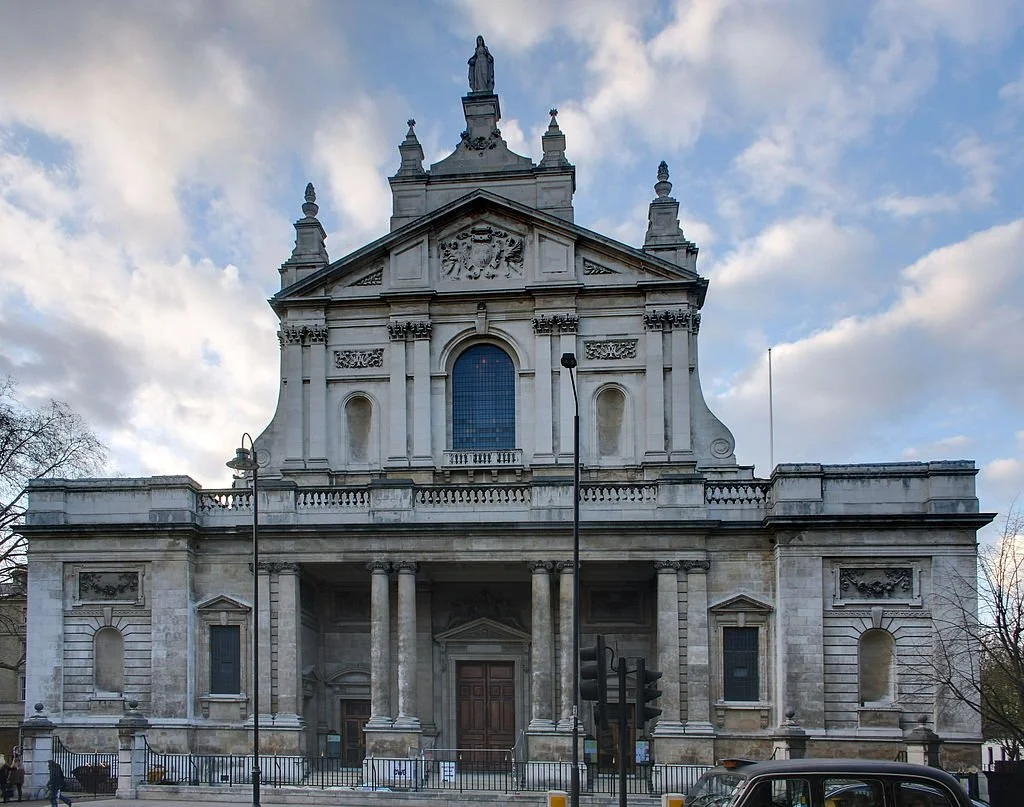Where Faith Meets Form: Architecture as Religious Expression
The relationship between religious sites and architecture in Britain has always been wrought with complex idiosyncrasies, from the difference in styles of architecture from Gothic to Classicism to Baroque; the difference in denomination style from Protestantism and Catholicism or differences between liturgy and theological beliefs.
As Chang Jung puts: “Early English aesthetic theoreticians, in particular Anthony Cooper Shaftesbury and Colen Campbell, rejected on moral grounds the ‘lasciviousness’ of Gian Lorenzo Bernini, Francesco Borromini, and Domenico Fontana. The exuberance of Baroque architecture equalled the moral decadence of Roman Catholicism, and its capricious forms were thought to be categorically antithetical to the pure rules of Classicism.”
Put simply, this reflects the architecture of English Protestant churches: less ornamentation, less stained glass windows and plain Anglican interiors, while Catholic Churches tended to usually incorporate more Gothic and Romanesque features including flying buttresses, ribbed vaults and lancet arches.
“Shaftesbury similarly rejected the church architecture of Christopher Wren and Nicholas Hawksmoor, which he deemed as being ‘Gothick.’ Following Giovanni Pietro Bellori’s condemnation of Borromini as a ‘gothic ignoramus’. The term ‘Gothick,’ as used by Shaftesbury, referred to any style that he considered rule breaking and offensive. This included what we presently call Mannerism and Baroque, as well as Gothic, that is, all styles not purely classical.”
Despite this revelation, it is not clear-cut that one denomination of Christianity favoured one architectural style over the other. There are many conflicting precedents which makes it hard to draw a clear pattern in design choice. As the psychiatrist and psychotherapist, Carl Jung said: “Every individual is an exception to the rule”.
This can be exemplified by the London Oratory built in Baroque revival style, a Catholic church in the centre of London in the late 19th century and Protestant St. Michael’s church, Chester Square, London, built in 1844. Two opposing factions of Christianity sharing similar architectural styles in the same time period.
Figure 1: London Oratory Photo credit: David Castor
Another example that can be seen within Gothicism, which we inherently assume as being Catholic, contradicts itself with examples such as the Protestant St. Andrew’s church in Oxford, restored by Gothic revival architect J.C. Buckler in 1864, featuring extensive verticality and flying buttresses and decorative stonework, a ‘black sheep’ amongst usual Protestant practice. Further support for this notion can be displayed through St Paul’s cathedral. We usually associate the English Baroque style to be Catholic however St Pauls shows a complex example of when this rule of thumb cannot be followed, featuring curved porticos and a grand cupola.
Figure 2: West Front of St Paul’s Cathedral in London. Photo Credit: Nicky Rochussen
Ultimately, the architectural style of a church often has less significance towards the denomination as is believed. They may have rules grounding their structure and design of appearance, but over years of many factions and a wealth of British history, these rules wax and wane. This, I believe, makes the landscape of churches even more interesting with their changing dynamics and aesthetics reflecting their location, geography, economics or whether or not Henry VIII wanted to remarry.
References
Jung, C. (1921). Psychological types. Routledge.
Jung, U. (2021). A Tale of Two Churches. In De Gruyter eBooks. De Gruyter. https://doi.org/10.1515/9783110742442
Morel, A.-F. (2016). The Ethics and Aesthetics of Architecture: The Anglican Reception of Roman Baroque Churches. Architectural Histories, 4(1). https://doi.org/10.5334/ah.75
Rose, M. S. (2004). In tiers of glory : the organic development of Catholic church architecture through the ages. Mesa Folio Editions.

